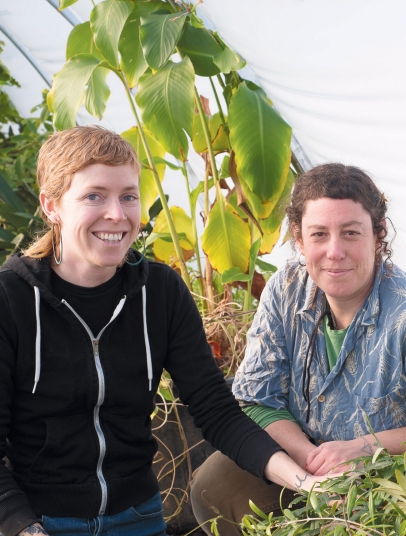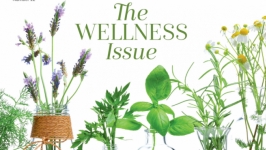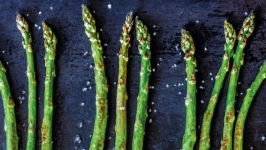The Power of Plant Medicine
Philly’s herbalists are sharing the age-old knowledge we need now to strengthen our bodies, calm our minds and support our communities.
IT’S A WARM SPRING SUNDAY AT BARTRAM’S GARDEN, and the sun is sparkling over the Schuylkill River. But my eyes are on the ground, scanning a verdant slope above the historic site’s community garden for long, striated leaves of plantain shooting up from the close-cropped lawn. My classmates have the same posture, pulling up dandelion leaves from the grass and plucking sprigs of abundant mugwort from the wooded margins of the property. Nearby, the seedlings we’ve transplanted—anise hyssop, holy basil, echinacea, ashwagand-ha— take root in raised beds, where our class will cultivate and harvest leaves, flowers, stems and finally roots throughout the season. We bring handfuls of our harvest to paper bags sitting in the shade beneath a tree. Later in the day, we’ll make our first tinctures, submerging the leaves in high-proof alcohol that will extract and preserve their medicinal properties.
This is just one day in the inaugural season of Building Your Home Apothecary, a course on medicinal plants launched in 2017 by clinical herbalist Kelly McCarthy and gardener Mandy Katz. Over monthly Sunday sessions from March through November, our class got hands-in-the-soil lessons on how to grow and harvest powerful plant allies. We study their effects, energetics, histories and indications and get lessons in making the teas, salves, oils and tinctures that have sustained the health of humans across the globe for generations.
McCarthy and Katz are just two of a growing group of herbalists using plant medicine to change the way Philadelphians think about health and wellness. They’re spreading the gospel of plants not only as medicine, but also as conduits to nature, a way to rebuild or deepen the relationship between ourselves and our bodies and a pathway to creating a more just and equitable world.
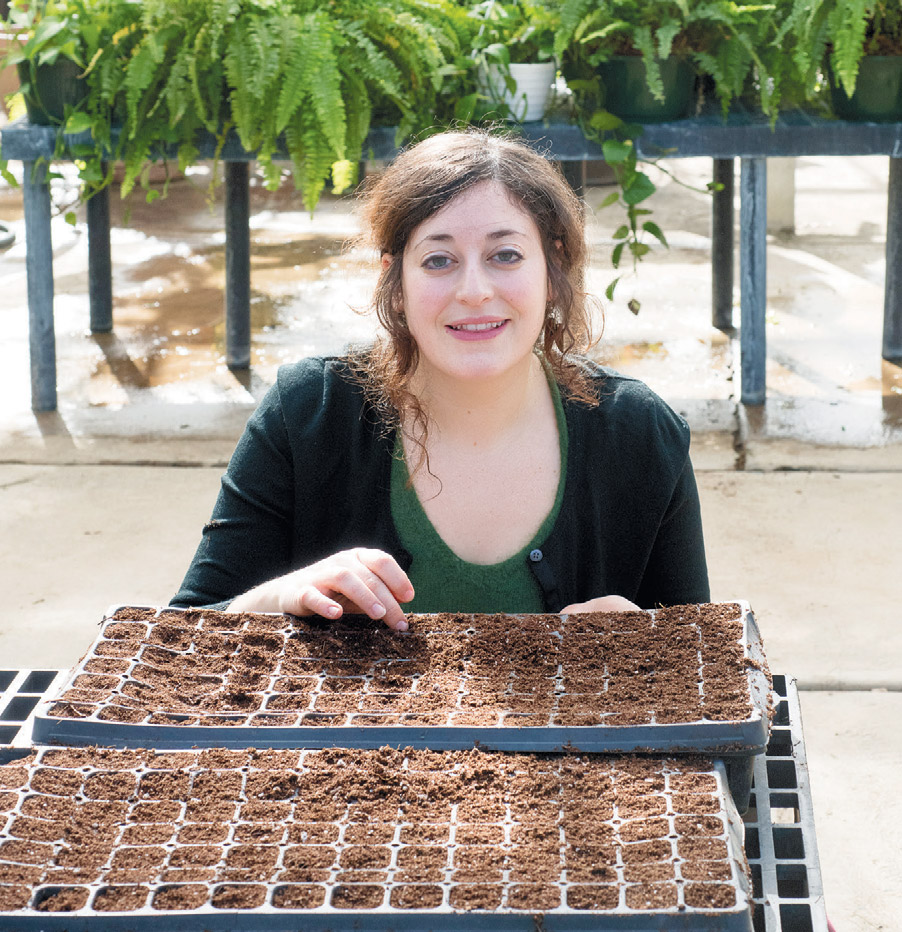 Alyssa Schimmel planting seedlings at the Fairmount Park Horticulture Center
Alyssa Schimmel planting seedlings at the Fairmount Park Horticulture Center
Katz, who has held the position of historical gardener at Bartram’s Garden since 2005, developed the course with McCarthy in part because she wants more people to have access to plant medicine. Their goal? To show people that the idea of using plants as medicine isn’t about rushing out to buy whatever so-called superfood is trending on Instagram or joining a pyramid scheme to sell essential oils. It’s about teaching folks from all backgrounds how to form a relationship with these plants that can be beneficial not just to our health, but to our community, culture and planet as well.
In their lessons, Katz and McCarthy make a point to present the material through an anti-colonialist, anti-capitalist and justice-oriented lens. They’ve organized donations of plant medicine to be sent to places like Puerto Rico, where resources and supplies are still scarce post–Hurricane Maria, and areas of the US-Mexico border where Central American families are seeking amnesty from violence in their home countries. And they encourage students to DIY and share what they’ve learned rather than participate in the mainstream commodification of plant medicines.
“The plants are so generous and giving of themselves,” says McCarthy. “I don’t want to be so human-centric as to say that that’s their purpose on this planet, but that that flies in the face of capitalism, which is not a generous system.”
When a $38 jar of Moon Juice ashwagandha powder is touted for its powers to “reduce stress-related carb cravings,” that’s plant medicine being used to make a buck off of the same insecurities as Insta-scams like flat tummy tea or appetite-suppressant lollipops.
And when Gwyneth Paltrow recommends smudging your home weekly with endangered, sacred species like white sage or palo santo to “detox” the space from “bad energy,” it’s also cultural appropriation. The perspective shared by McCarthy and Katz means learning about and honoring the Indigenous, African, African- American, Asian and Latin cultures and peoples whose herbal traditions the wellness-industrial complex often co-opts, erasing these origins and reducing sacred plants to trendy buzzwords and packaged products sold for profit.
“My herbalism challenges that capitalist way of compartmentalizing a life down to products,” says Katz. Mainstream American culture tends to “discover” medicines and ingredients based in herbal medicine that most of the world’s population has long used for everyday health, and it takes intention to cut through that messaging. “The goal is healing that’s holistic—of your body, our culture and the earth all together,” she says.
McCarthy and Katz’s DIY, hands-on approach also removes one of the most significant barriers to using plant medicines: the cost. By focusing on how to grow, harvest, process and use plants to support health, the Building Your Home Apothecary course creates access to medicines that can be prohibitively expensive to use with any regularity when purchased at retail.
“My herbalism challenges that capitalist way of compartmentalizing a life down to products,” says Katz.
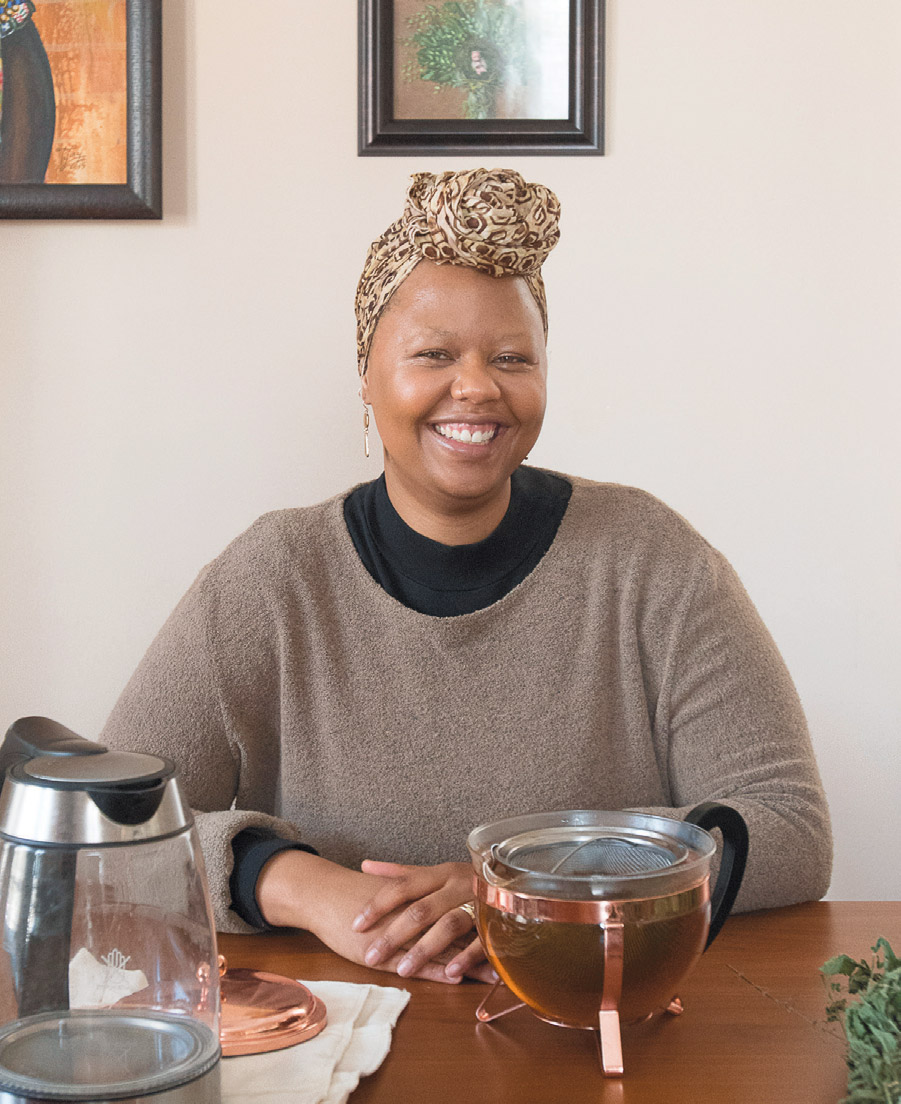 Taylor Johnson- Gordon at home with raspberry nettle tea
Taylor Johnson- Gordon at home with raspberry nettle tea
“I tell my clients ‘Healthy isn’t perfect, it’s resilient.’”
WELLNESS FOR ALL
Wellness is a $4.2 trillion industry worldwide. From Instagram influencers touting superfood-packed smoothie bowls to products as varied as hot cocoa mix and face cream dosed with wild-foraged medicinal mushrooms, we’re obsessed with feeling, looking and becoming healthier. Perversely, as we’ve become more and more obsessed with the struggle to optimize our bodies, healthcare has become more expensive and more difficult to access.
In a world of shrinking healthcare subsidies, GoFundMe campaigns to pay for cancer treatments and stratospheric hospital bills for basic care, it’s no wonder we’re worried about taking care of ourselves, despite all the mixed messages, and mainstream healthcare seems more like an adversary than an ally in making that happen.
In fact, our ancestors all over the world—and the majority of people alive today—use traditional knowledge of healing plants to keep themselves healthy on a day-to-day basis. While some medicinal plants are dangerous or deadly when used improperly (just like pharmaceuticals can be), the most commonly grown and used medicinal herbs, and all the ones that Katz and McCarthy work with, have been recognized as safe and even beneficial for millennia.
In Europe, herbal medicines are more accepted than they are here, partially because many more studies on their efficacy have been done there. But some people don’t need a study to convince them that plant medicine can be effective, because they’ve experienced it for themselves.
Herbalist and educator Alyssa Schimmel, who teaches with the Philadelphia Orchard Project, didn’t seek out plants to treat her health issues—in fact, she says, the plants found her.
Schimmel developed a rash in the form of small sores on her arms after swimming in a creek. After a series of tests—bloodwork and digestive work, physicals and biopsies—showed inconclusive results and doctors hadn’t been able to determine a diagnosis, Schimmel heard oregano—the plant you probably have in your spice rack right now—calling to her.
“I just heard this voice saying, ‘Here’s how to make medicine with me and you will heal,’” she says. The next day, she saw that her housemate had brought armloads of fresh herbs, including oregano, into their shared house for everyone to use. “I thought it was unusual, but I tried it,” says Schimmel. She began taking strong doses of oregano tea steeped overnight and took baths infused with oregano. The rashes, which Schimmel thinks were the result of a parasite, began to heal. Experiencing these results “strengthened the relationship I felt with the plants that I followed as I began my path,” she says.
Schimmel began reading more about herbs, working with plants and taking classes with established herbalists. Now, she uses medicinal plants as the basis of educational work she does in Philly schools and community centers.
“Often, when people hear my story, it seems far-fetched,” Schimmel says. While some folks might not believe in the sentience of plants at first, she likes to use the idea as a jumping-off point for grounding her students in their bodies and making them more aware of their senses—starting with a cup of tea brewed from a medicinal plant, perhaps.
“We’re drinking the tea and seeing how we feel—what we observe,” she says. “People have a second mode of knowing.”
All of the herbalists in this story are grateful for access to allopathic medicine— what we think of as the medical establishment. But, although going to the doctor is necessary, the experience is all too often disempowering, confusing and expensive, according to McCarthy. “It sucks even more if you have a marginalized identity and your doctor doesn’t see how that’s a part of the picture—if you’re a Black woman or a queer person and your doctor is a straight white man who says, ‘You have anxiety, have some Ativan.’”
There’s a wide variety of herbs used to treat anxiety, McCarthy explains, but a good herbalist will help you find the one that can best remedy your specific situation. If your anxiety comes along with nausea and headache, there’s an herb to treat those symptoms.
“It’s like you’re feeling seen by the plants,” she says. Giving individuals the tools they need to treat everyday health issues can also give them a feeling of agency over their own health, while experiences with our country’s convoluted, hard-to-access healthcare system can do the opposite.
Another Philly herbalist, Taylor Johnson- Gordon, seeks to address the wellness needs of Black women specifically, offering consultations and workshops on wellness and nutrition in her practice, Sistah of the Yam. She grew up wanting to be a doctor, studying biochemistry in college before taking a step back from the pre-med track to go to seminary. There, she realized that the spirit and the self were integrated and began focusing on her own health through plant-based nutrition and herbal medicine.
“I tell my clients, ‘Healthy isn’t perfect, it’s resilient,’” she says. “Life can be very hard for everyone, particularly for Black people and Black women who are up against a lot every day.”
Johnson-Gordon focuses her practice on sharing low-cost, practical wellness tools with Black women, who are often gatekeepers of culture, passing down food and healing traditions in their families. She’s also dedicated to reconnecting her students and clients with the traditions that kept their elders and ancestors alive through centuries of oppression in America.
“[African-Americans] brought herbal medicine to the forefront as we were creating our own systems in the context of chattel slavery, but a lot of people think of herbalism as having a white face,” Johnson- Gordon explains. “I feel like it’s my responsibility to remind people what the older generations did.”
 Tania Rios and Kate Barut.
Tania Rios and Kate Barut.
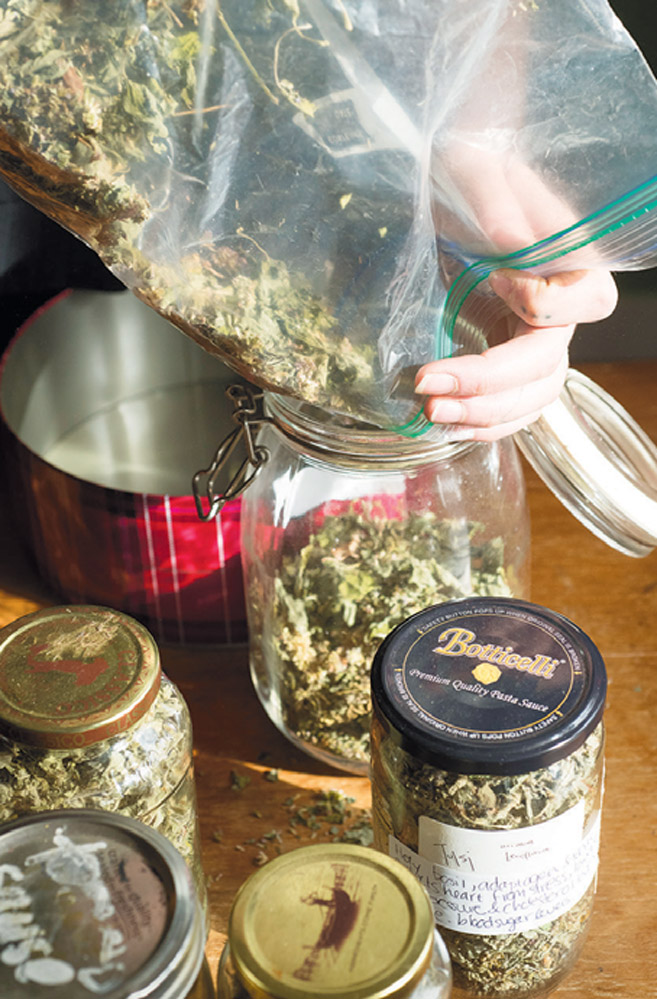 Making herbal medicine for undocumented families in sanctuary.
Making herbal medicine for undocumented families in sanctuary.
HELPING & HEALING
For 2018’s Building Your Home Apothecary class, McCarthy and Katz changed their admissions process. To maximize the impact of their teachings, the duo chose students who were already doing community- oriented or social justice work and could easily share what they’d learn with friends, colleagues and neighbors.
Now, two of their students, Kate Barut and Tania Rios, are using their herbal knowledge and networks to support undocumented immigrants right here in Philadelphia.
Three families are living in sanctuary in Philadelphia, taking shelter in places like churches and schools that ICE typically won’t target. Barut has been working as an interpreter with their supporters at the New Sanctuary, and with the families’ consent, she and Rios assembled care packages including nervines like tulsi and anise hyssop, echinacea root tincture for immune support and skin salve containing bay leaf, calendula and yarrow to heal cuts or irritation on skin.
While the families have advocates in place to assist them in an emergency, Barut says, day-to-day support for staying healthy in their situation wasn’t readily available. “Herbal medicine is a really accessible tool that was really welcomed to aid them in staying healthy and addressing trauma while they have this intense experience,” she explains.
Teas, salves and tinctures might not seem like much in the face of adversity, but they’ve had an effect beyond soothing stress or healing irritated skin. This ready-made apothecary is a way to show people in an inhospitable place that there are other people reaching out to care for them.
Plant medicine made by everyday people reminded the recipients of home, too. In this case, the families in sanctuary with their children hail from Mexico, Honduras and Jamaica, where harvesting and using plants for their medicinal properties is commonplace. The gift created an opportunity for supporters to check in with those in sanctuary about how they’re feeling and, Rios says, communicated another message to the families—one of welcome and well wishes.
“It was nice to take the families something that we grew here for them—it was meaningful for them,” she says. “It was also meaningful that we could offer them some healing from our land in a place that hasn’t necessarily been good or healing to them.”


